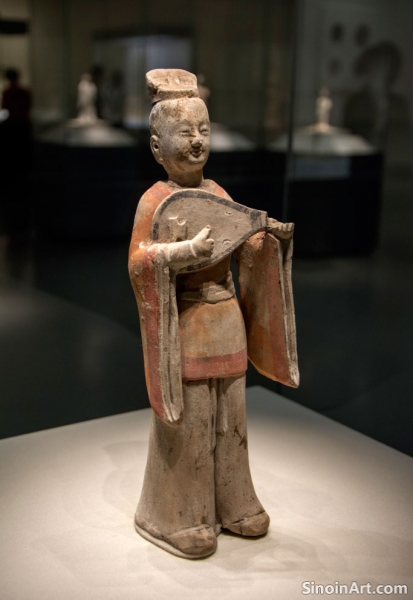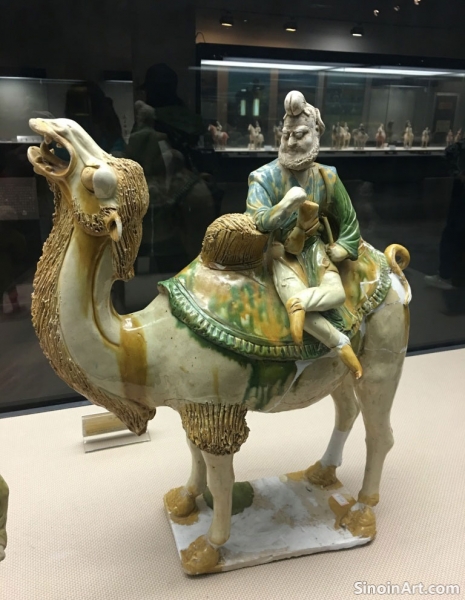Tang Ceramics and Foreign Trade
|
The Tang Dynasty's open trade policies and the prominence of the Silk Road facilitated the widespread distribution of Tang ceramics to foreign lands. These ceramic wares, renowned for their beauty and quality, became valuable commodities in international trade, bringing Tang artistry and craftsmanship to distant corners of the world. The impact of this trade was significant, not only economically but also culturally.  Tang ceramics, particularly celadon and sancai wares, were highly sought after in various parts of Asia, the Middle East, and even Africa. Fragments of Tang ceramics have been unearthed at numerous archaeological sites along the Silk Road and beyond, testifying to their widespread popularity and influence. The discovery of Tang ceramics in places like Persia, Egypt, and Japan underscores the global reach of the Tang Dynasty's artistic output.  The export of Tang ceramics not only facilitated trade but also influenced the development of ceramics in other cultures. The unique forms, glazes, and decorative motifs of Tang wares often inspired local potters to adopt new techniques and styles. The influence of Tang ceramics can be seen in the pottery traditions of various countries, highlighting the cross-cultural artistic exchange that took place during this period.  The trade in Tang ceramics also contributed to the prosperity of the Tang Dynasty. The export of these highly valued goods brought wealth to the imperial coffers and fueled the expansion of the ceramic industry. The demand for Tang wares also encouraged potters to continue innovating and refining their techniques, leading to further improvements in quality and design. The impact of Tang ceramics on foreign trade is profound. These artistic objects not only served as valuable trade commodities but also as ambassadors of Tang culture. The global distribution of Tang ceramics helped to spread the influence of Chinese art and design, leaving a lasting legacy in the history of ceramics and international trade. |
Tag : Tang Dynasty ceramic export, Silk Road trade, ancient Chinese pottery trade, cultural influence ceramics, international trade artifacts
Related information
- The Dawn of Celadon Splendor
- The Decorative Motifs of Tang Ceramics
- The Influence of Foreign Cultures on Tang Ceramics
- The Economic Importance of Tang Ceramic Production
- The Vibrant World of Tang Ceramics: An Overview
The Tang Dynasty (618-907 AD) represents a crucial period in the history of Chinese ceramics, particularly in the development and refinement of celadon wares. While not as dramatically innovative as the later Song dynasty, the Tang era saw a significant leap in kiln technology, material preparation, and artistic understanding that laid the groundwork for future ceramic masterpieces. Celadon, with its subtle green hues reminiscent of jade, enjoyed immense popularity, favored by both the imperial court and the burgeoning merchant class. Tang celadon wasn't just about mimicking jade; it was about capturing the essence of natural beauty and the philosophical ideals of the time.
The decorative motifs found on Tang Dynasty ceramics are rich and varied, reflecting the diverse cultural influences and artistic trends of the era. These motifs, ranging from simple geometric patterns to complex figural depictions, not only enhance the aesthetic appeal of the wares but also provide insights into Tang beliefs, values, and artistic tastes.
The Tang Dynasty’s openness to international exchange significantly influenced its ceramics, evident in the adoption of foreign patterns, vessel forms, and decorative techniques, reflecting the cosmopolitan spirit of the era.
Tang Dynasty ceramic production was economically significant, providing employment, fostering trade both domestically and internationally, and contributing significantly to the empire’s wealth, thereby stimulating economic growth.
Tang Dynasty ceramics (618-907 AD) are characterized by vibrant colors, diverse forms, and innovative techniques, most notably three-color (sancai) glazes, reflecting the prosperity and cultural exchange of the era.